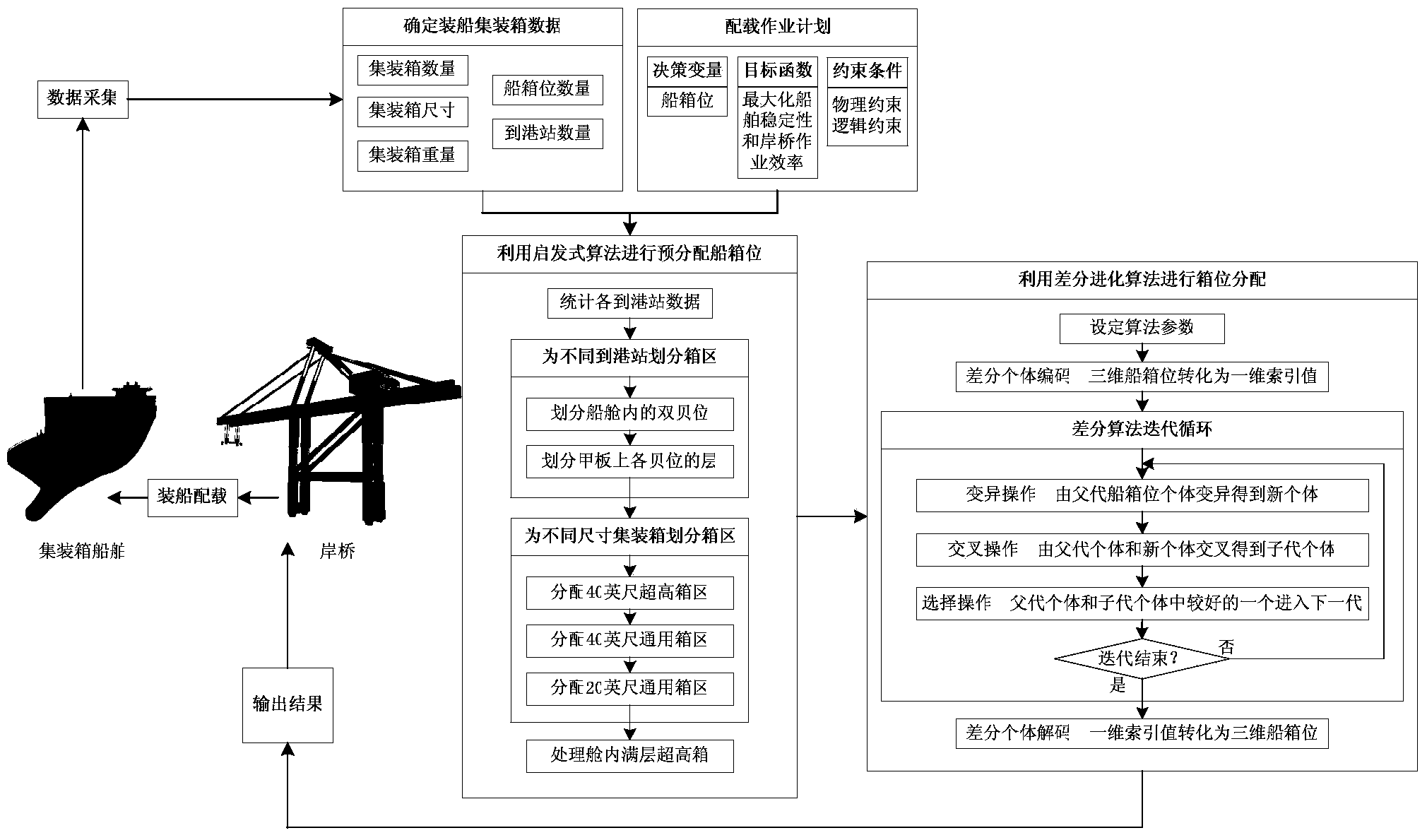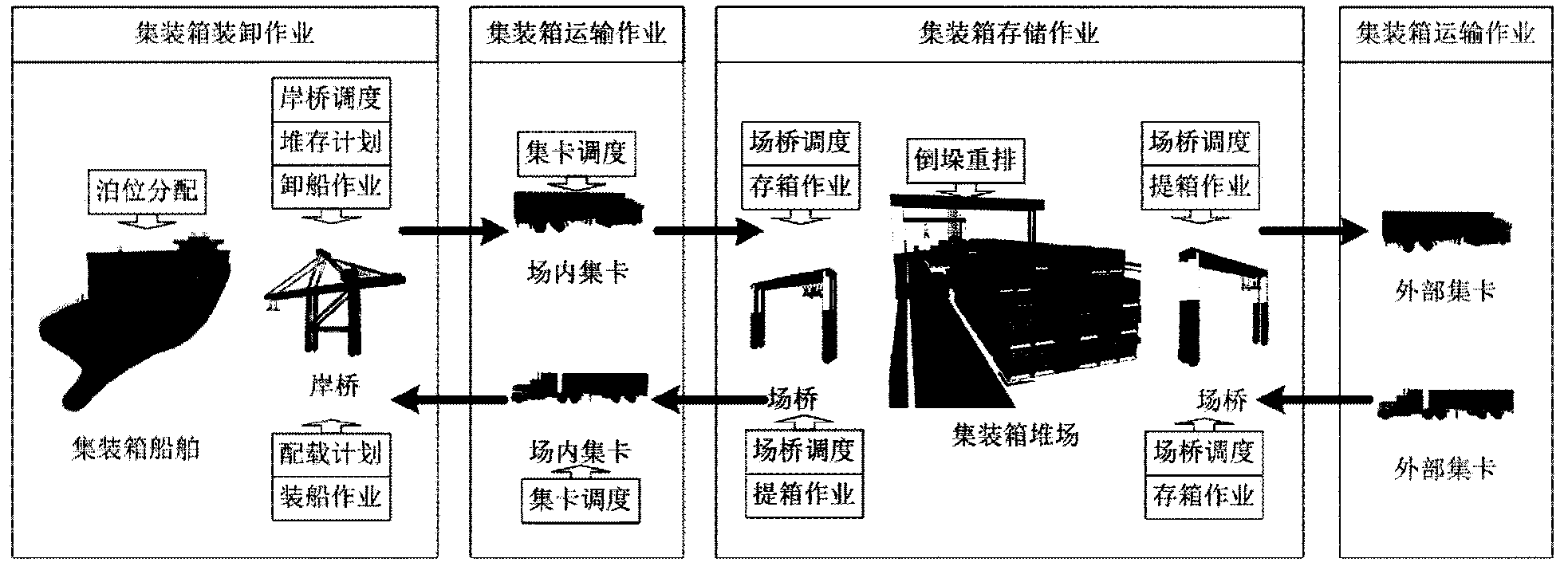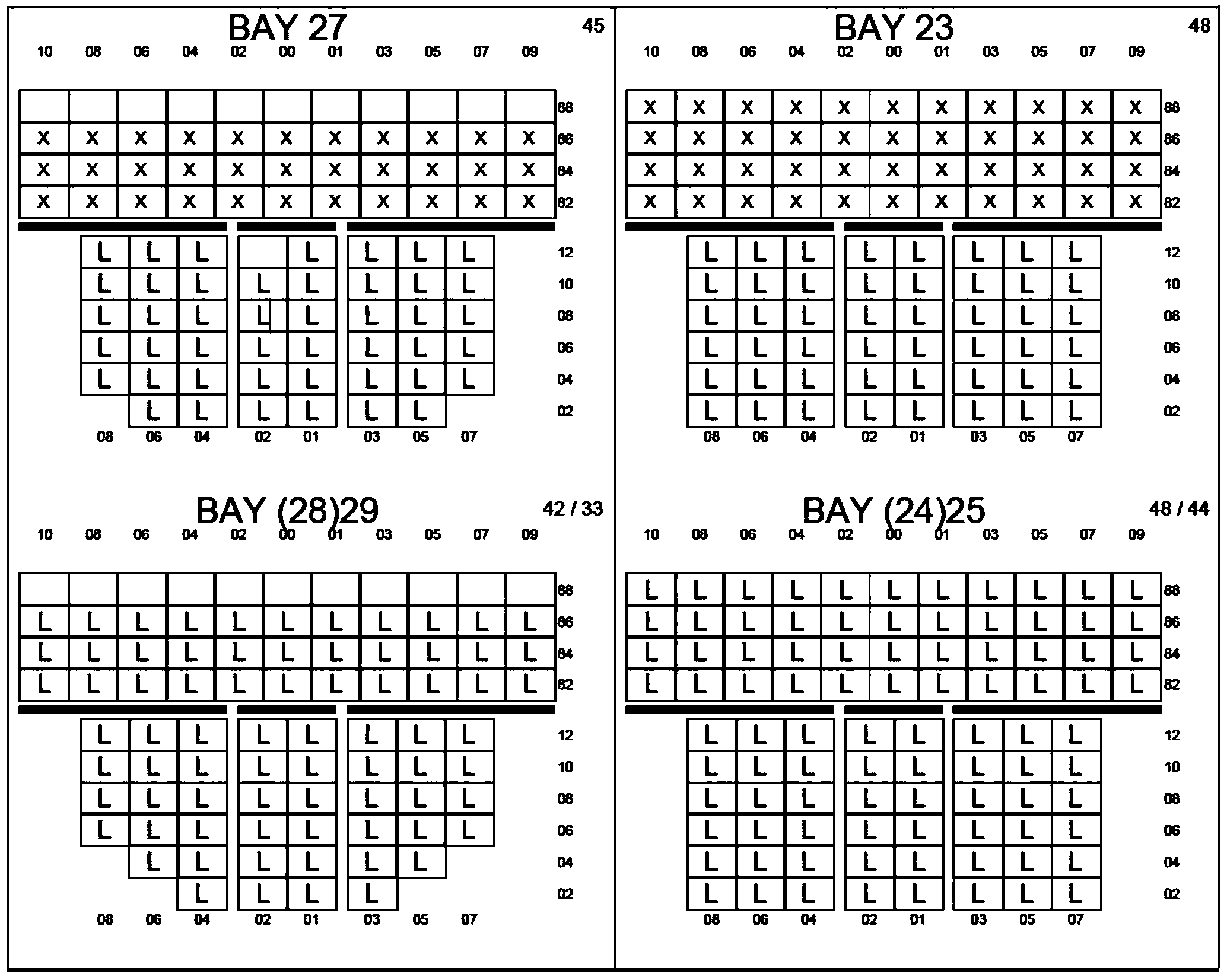Cargo allocation method for improving quay crane operation efficiency and vessel stability of containers
A container and stability technology, which is applied in the field of container terminals, can solve problems such as stability deviation threats to safe navigation of ships, affect the efficiency of wharf quayside crane mechanical operations, and prolong the service time of ships in port, so as to shorten the time of berthing and service, reduce The number of ineffective operations and the effect of speeding up logistics
- Summary
- Abstract
- Description
- Claims
- Application Information
AI Technical Summary
Problems solved by technology
Method used
Image
Examples
Embodiment Construction
[0045] The specific implementation manners of the present invention will be described in detail below in conjunction with the accompanying drawings.
[0046] Taking China Ocean Shipping Company (COSCO) domestic trade container ship "Xin Hongxiang 76" as an example, the stowage plan formulation of export voyage 002N will be used to illustrate the specific implementation of the present invention.
[0047] The ship has a total of 16 odd-numbered bays. The maximum number of layers on the deck is 4 layers, and the maximum number of rows is 8 rows. The maximum number of layers in the cabin below the deck is 4 layers, and the maximum number of rows is 6 rows. The box distribution of "Xin Hongxiang 76" is as follows: Figure 5 shown. There are two arrival stations for this voyage, namely Nansha, the first arrival station, and Shekou, the second arrival station. The ship docked at the container terminal with 6 quay cranes for single-container crane operation. The average daily loadin...
PUM
 Login to View More
Login to View More Abstract
Description
Claims
Application Information
 Login to View More
Login to View More - R&D
- Intellectual Property
- Life Sciences
- Materials
- Tech Scout
- Unparalleled Data Quality
- Higher Quality Content
- 60% Fewer Hallucinations
Browse by: Latest US Patents, China's latest patents, Technical Efficacy Thesaurus, Application Domain, Technology Topic, Popular Technical Reports.
© 2025 PatSnap. All rights reserved.Legal|Privacy policy|Modern Slavery Act Transparency Statement|Sitemap|About US| Contact US: help@patsnap.com



